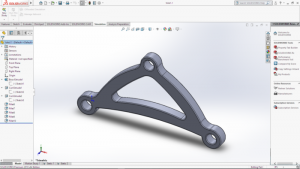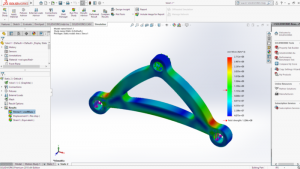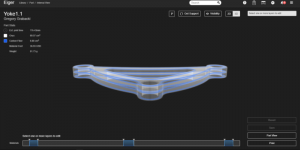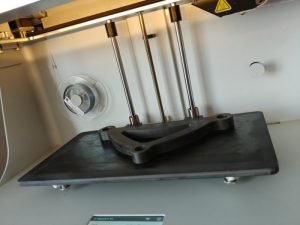A: CHALLENGE ACCEPTED!

Like so many concepts, we’ll start with a simple sketch of a part. In this case, we’re designing a simple yoke.

Next, it’s a matter of transposing our idea into a SolidWorks CAD model.

It will show both the three dimensional model as well as a two-D rendering to double check dimension

We’ll also simulate the load in order to check our stress concentrations as well as fitting the materials into the following step.

Since we’re dealing with complex orthotropic materials, when we move to the actual manufacturing of the part with our CAM capability. It’s of critical importance to place our carbon filaments correctly. This is also a great feature as we can save cost by our ability to add carbon where it’s needed most and not where all it adds is cost.

This shows the part finished printing. Total part weight is 85 grams (3 oz.) An equivalent 6061 Aluminum part will weigh right around 900g (2lb)
Note the carbon reel to the left. The polymer matrix feed is not shown.
OK. How did this turn out? Judge for yourself.
The entire stack of weights plus the rack itself is approximately 140lb – 750X part weight! Well within the design parameters. The Yoke supports this quite easily and shows no measurable deflection or cracking.

Did I mention that this material is impervious to all common cutting fluids, has excellent weather resistance and has a heat deflection temperature of 145º C (293ºF)!
Surprised? What would you say if the cost of this (vs. machined 6061) is lower?